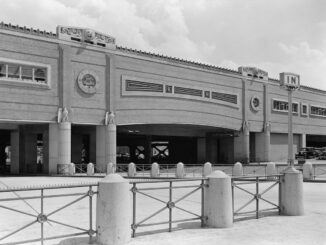SACRAMENTO, Calif. — Amtrak is buying 70 new electric locomotives to provide improved performance and reliability for its Northeast intercity passenger rail services.
The six-year, $466 million contract was awarded to Siemens and will create 250 jobs primarily at a facility in Sacramento, Calif., but also at plants in Norwood, Ohio, and Alpharetta, Ga.
“Amtrak is a critical transportation provider in the Northeast and modern locomotives are essential to meet the service reliability expectations of our passengers and for us to handle the growing ridership demand in the coming years,” said President and CEO Joseph Boardman.
Boardman explained the first Amtrak Cities Sprinter ACS-64 electric locomotive is to be delivered in February 2013 and will operate at speeds up to 125 mph on the Northeast Corridor from Washington, D.C., to Boston and up to 110 mph on the Keystone Corridor from Philadelphia to Harrisburg, Pa.
They will replace locomotives in service between 20 and 30 years with average mileage of 3.5 million miles traveled.
“Amtrak’s order for 70 new electric locomotives will not only create new manufacturing jobs, it supports the Department of Transportation’s strategy to use transportation to build the infrastructure needed to support a modern growing economy, while helping make our cities more livable, improve the environment and reduce our dependence on foreign oil,” said Joseph C. Szabo, Federal Railroad Administrator. “This new equipment will go far in meeting the rapidly growing demand for intercity passenger rail service in the Northeast.”
“As the global leader in rail innovation, we are thrilled that Amtrak has selected our proven locomotive technology which will create 250 green manufacturing jobs in the United States,” said Daryl Dulaney, president and CEO, Siemens Industry, Inc. “These locomotives will ATK-10-141 be built in America using renewable energy and provide cleaner, more efficient movement of people on the most heavily traveled rail route in the country.”
The new Amtrak locomotive meets the latest federal safety regulations and includes additional safety features not yet required such as crash energy management components like anti-climbing technology and push-back couplers designed to keep the train upright, inline and on the tracks in the event of a collision. The design also allows for easier maintenance leading to faster turn around times and increased availability of locomotives for service.
In addition, the new locomotives will be more energy efficient and will replace older units that presently do not have regenerative braking systems that can automatically return electricity to the power grid.
As the new units come into service, Amtrak plans first to retire all current 20 DC AEM-7 electric locomotives in its fleet, followed by replacement of all 29 AC AEM-7 units. The remaining 21 locomotives of the order will be used to replace all 15 HHP-8 locomotives with the additional units supporting anticipated service expansion.
Boardman added in February 2010 Amtrak released an ambitious, long-term Fleet Strategy Plan to replace aging and outdated locomotives and passenger cars in order to enhance operations, attract more riders, reduce maintenance costs and delays, improve on-time performance and expand services on current and new routes. The report lays out the basis for recapitalizing the entire fleet over a period of time in a manner that will not only provide new and modern equipment for passengers, but will also develop and sustain the domestic production capacity needed for the long term viability of intercity passenger rail in the United States.
The new 70 electric locomotives are a key element of that plan and is the second major equipment procurement undertaken since July 2010 when Amtrak announced the award of a $298 million contract to build 130 single-level passenger rail cars to support growing ridership on its long-distance trains.



